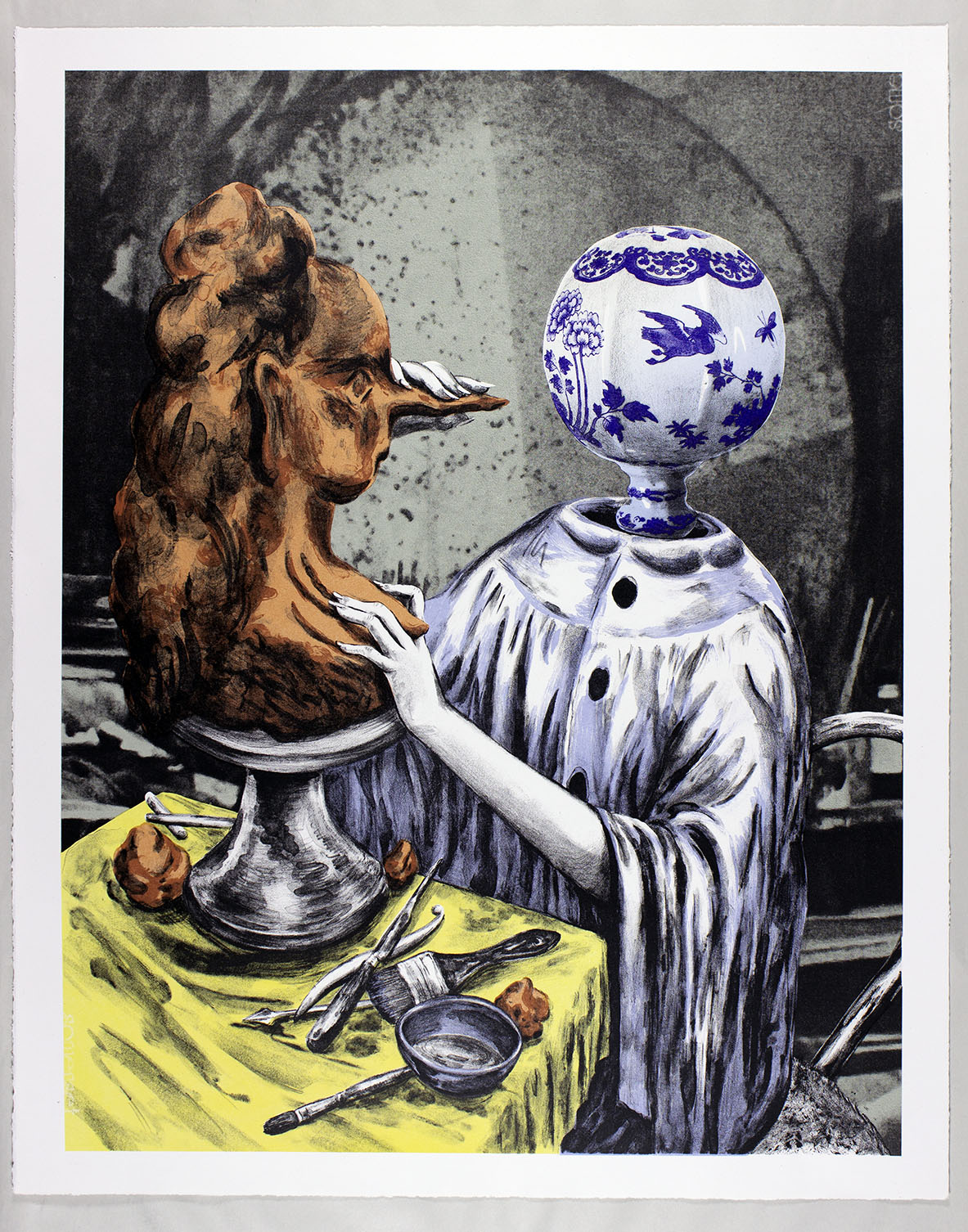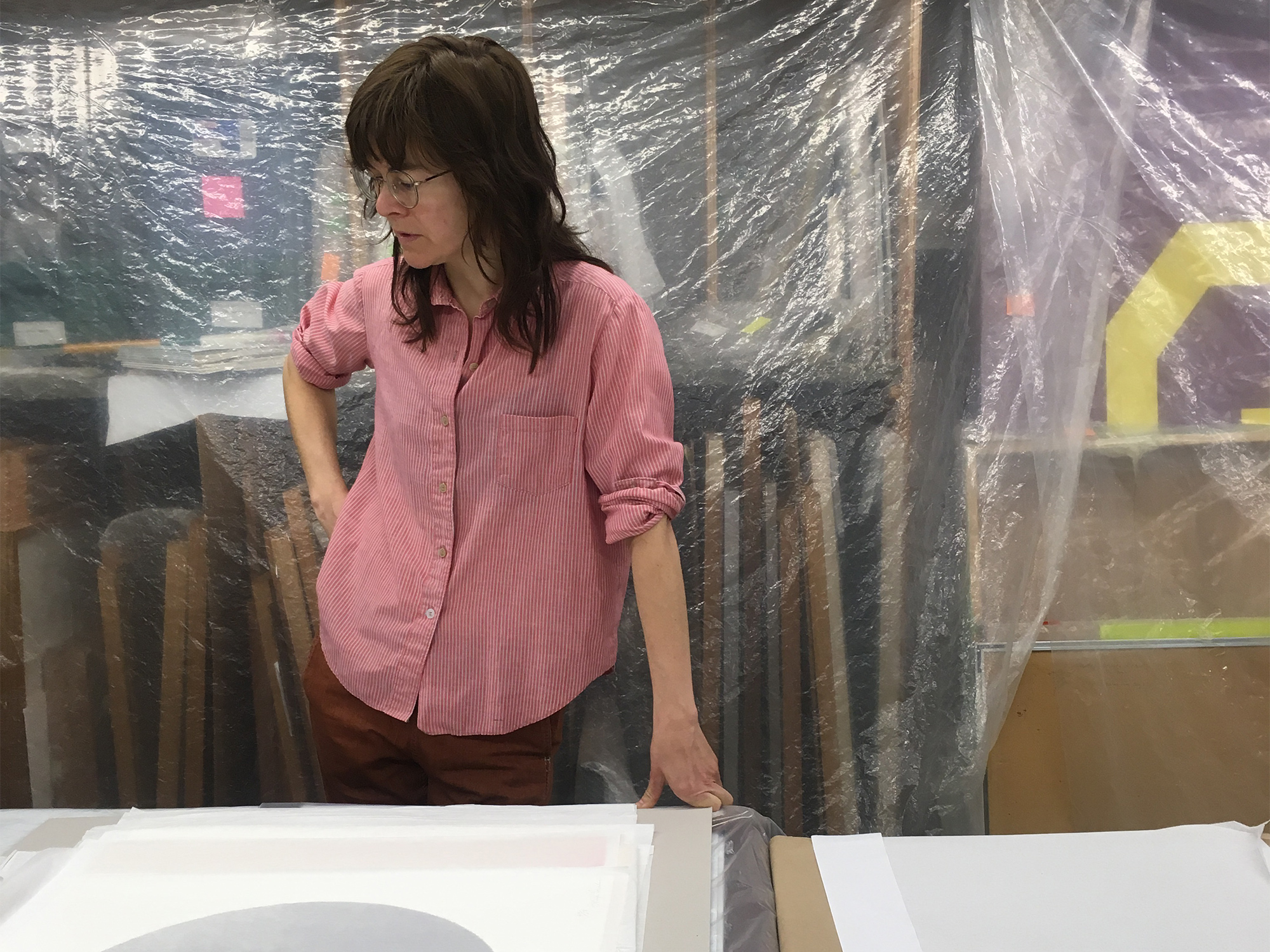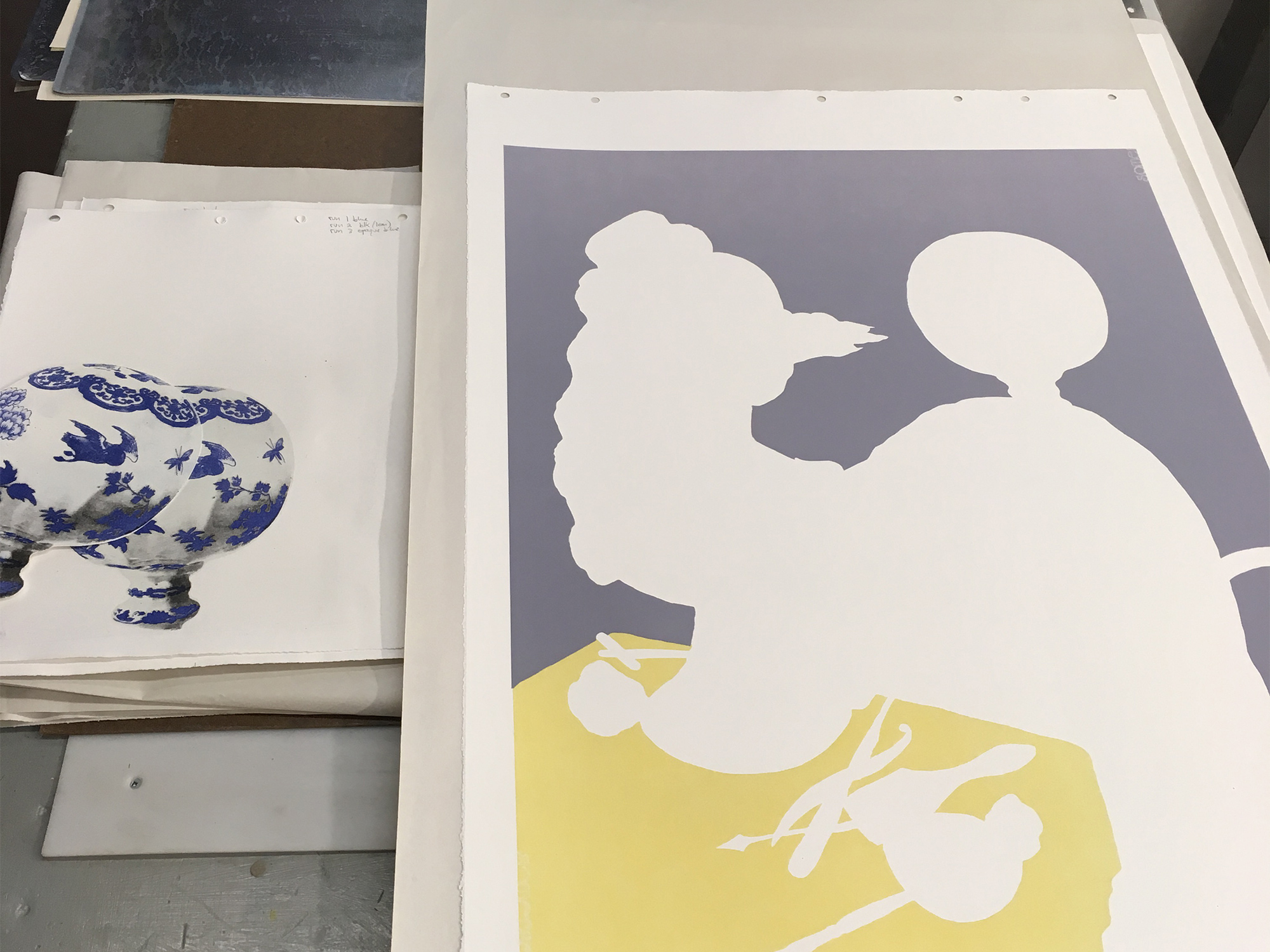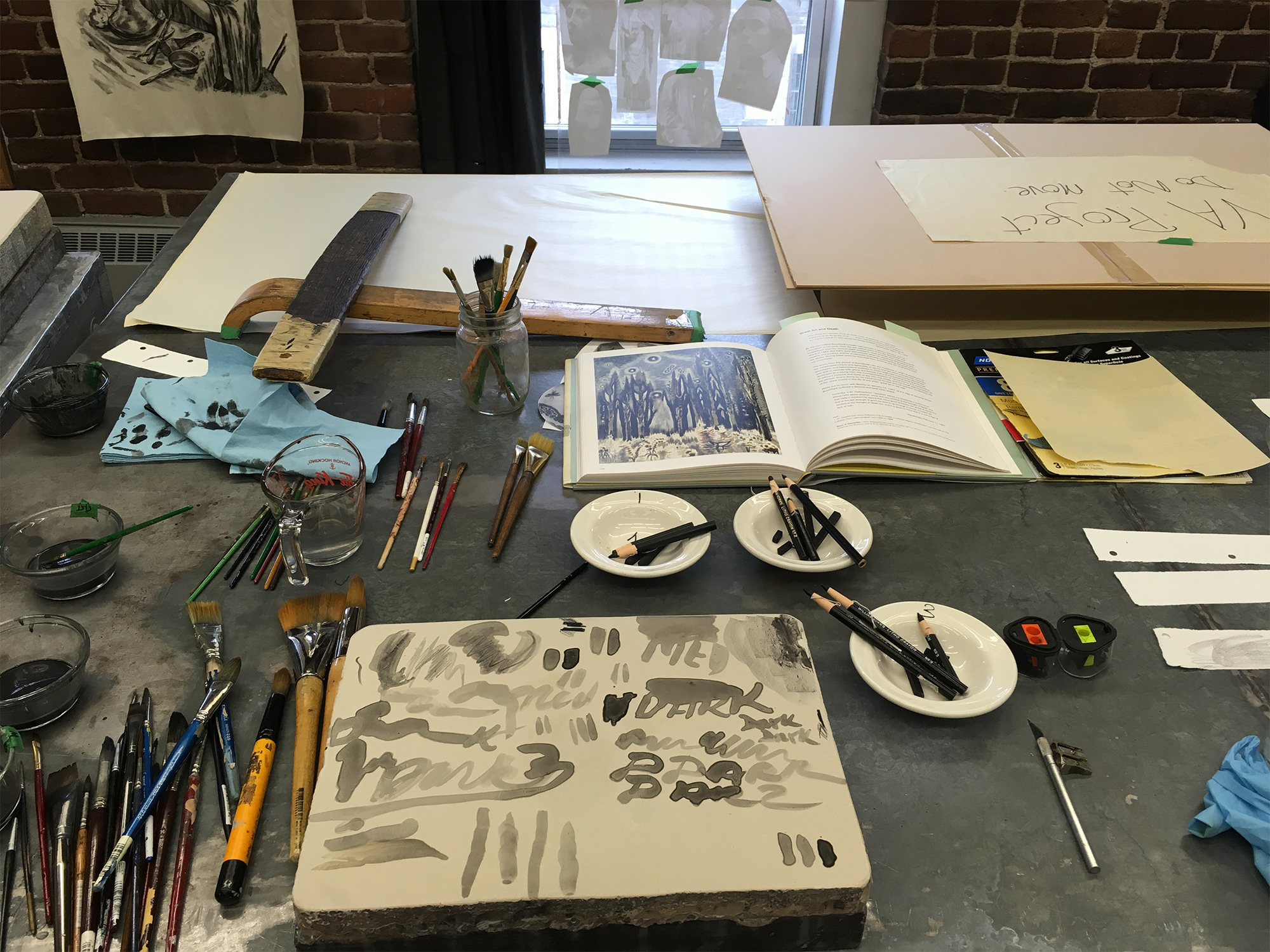Description
Shary Boyle – Cephalophoric Saint
For nearly 20 years, viewers have been lucky enough to be invited to peer through Shary Boyle’s looking glass. Inside we find a world inhabited by characters like the feral children Bloodie and Peg–Leg, by delicate monsters, and by strange and beautiful hybrid figures that turned the prim world of porcelain on its head (sometimes quite literally). It is a drippy, gooey, glossy, sexy world that we gladly stumble through.
In 2015 Boyle began drawing a series of artist figures, depicting them in what she describes as the process of “making themselves through materials.” Cephalophoric Saint is one such artist, with her faceless chinoiserie porcelain head a delicately balanced ball over her smocked shoulders, and her creamy white hands gingerly moulding a clay bust of a woman’s likeness. The title is a reference to Christian iconography, where Saints would be depicted in keeping with their martyrdom. In many images, for instance, St. Lucy holds her own eyeballs to demonstrate that hers were gouged out at the time of her death, her sentence as a persecuted Christian in Ancient Rome. In other examples, St. Agatha of Sicily presents her upturned breasts on a platter to show that hers were sliced off during her brutal torture. In a sort of tender surrealism, decapitated Christians – known as cephalophores – were represented as carrying or cradling their own heads in their arms.
We can therefore understand an inherent violence found in the title Cephalophoric Saint, as well as strong notions of sacrifice. What does the artist sacrifice at her altar and what do we really know of the strange, alchemical process that goes on behind the artist’s closed studio doors?
The intimacy of the scene makes us, the viewer, feel more like a voyeur, as though we have come across some private, sacred space only to find a Frankensteinian feat in the making, as the artist works, eyelessly, by expert touch alone. Boyle’s 2015 drawing Sculptress mines a similar vein, with the faceless sculptress straddling a massive tower of clay. She works urgently, pulling the clay into a phallus with one hand and drawing open a gaping hole with another. This cephalophore is more tender; her slender, translucent hands and long nails caress the clay bust like a lover groping in the dark, a muddy peak slipping through open fingers like a nipple. “The act of sculpting is particularly sensual,” says Boyle, “as well as something pragmatically mythological, creating from the dirt itself… Sculpting is suggestive, and a kind of power play… I want to expose the vulnerable audacity of it.”
It is easy to see the audacity of Boyle’s figures: they are freaks, oddities, outcasts and perversions. And it is so rare that women are called perverts that it is refreshing to use the word here. Women’s desire is too often understood as occurring outside of them – for others and not for themselves. Consumed, not consuming, they are seldom bestowed with the active noun “pervert”, rather, more commonly understood as the passive noun “slut”. Neither term should be considered an insult. It is also worth noting that most female Christian Saints lived as virgins, pledging their bodies to God, mediating their sexual autonomy through the divine. Boyle’s equally autonomous artist/saint is delightfully perverse in her form and in her touch; her sexual exploration a metaphor for the formation and construction of self. Boyle consistently allows her figures and characters their own sexual momentum, a desire and a touch that is for them alone. And the eager, uncertain viewer, is once again thrilled to have simply been invited to watch.
—Mollie Cronin
Shary Boyle works across diverse media, including sculpture, painting, installation and drawing. She is known for her bold, fantastical explorations of the figure. Highly crafted and deeply imaginative, her practice is activated through collaboration and mentorship. Boyle’s work considers the social history of ceramic figurines, animist mythologies and folk art forms to create a symbolic, feminist and politically charged language uniquely her own.



